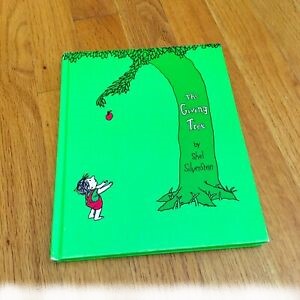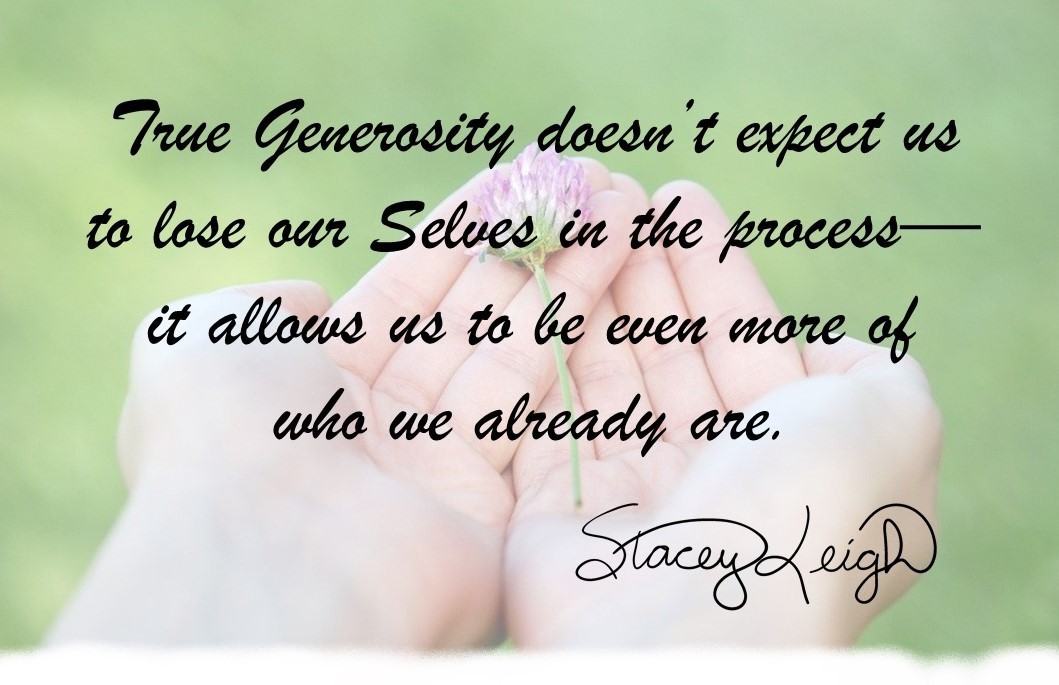Book Review: The Giving Tree
by Shel Silverstein

17 December 2019 | Theme: Generosity | 6-Minute Read | Listen
Way back in 1964, the year the Beatles “invaded” America, the Civil Rights Act was signed into law, and I was born, a thin green book appeared on shelves across the country. Written by beloved (though randy) poet Shel Silverstein, the book quickly became a nursery must-have.
“Once there was a tree, and she loved a little boy,” it begins. The little boy would play under her every day, swing from her branches, gather her leaves, eat her apples, and rest in her shade. Time passes. He stays away from her for longer and longer periods of time, returning only to take from her. First he wants money, and the tree offers her apples so that he can sell them for personal profit. Then he wants a house so that he can marry and have a family; the tree offers that he can cut off her branches to build his house. Eventually, still unhappy, he wants to get away from it all, so she tells him to cut down her trunk to make a boat so that he can sail away and be happy. In the end, he returns one last time, by now an old, old man. He is tired, and all he wants is a place to sit. The tree, now only a stump, offers herself as a place for him to rest.
Extolled by some as a story of selfless giving, the book is, to me, a story of abusive selfishness and unhealthy co-dependency. The boy takes everything the tree has and never once thanks her. He never cares for her—never waters her, clears weeds from her, or prunes her so that she will flourish. He doesn’t even pay attention to her except when he is unhappy and has needs. His treatment of her ranges from absolutely neglecting to completely ravaging her.
Meanwhile, she “loves” him, so she waits and waits for him to come around, rejoicing when he at last graces her with his presence; but each visit results in her offering more of herself to try to make him happy. She destroys herself in the process, and each time, she is “happy.”
It’s easy to interpret the book as depicting the nobility of sacrifice, like that of a mother to a child. But self-sacrifice to the point of having nothing left is Not Healthy. The tree can only be happy when she is doing for the boy—she has no other interest or purpose. THAT is self-abuse. She is so absorbed in the boy, she has nothing else—we don’t see her interacting with any creatures of the forest or other trees. She isolates herself and offers herself as the boy’s narcissistic supply. And he develops into the ideal narcissist—his unhappiness is never his own fault, so he must take from her to try to become happy. And yet, we—and presumably the tree—never get to see him living happily. All we see is a greedy, selfish boy-man who turns up only when he wants something.
The book is NOT about Generosity. “Generosity,” according to Adam and Allison Grant, “is not about sacrificing yourself for others — it’s about helping others without harming yourself. It’s not about giving to takers — it is giving in ways that nurture more givers. It’s not about dropping everything any time someone needs you — it is prioritizing your needs along with theirs.” If you assume the story is about Generosity, then the lessons you take away are: that it’s OK to take from someone to the point of destroying them; that “real” love means giving until it hurts, and then giving some more; that adults “owe” children their happiness and have the ability to give that to them.
It isn’t that I dislike Shel Silverstein or his works. To the contrary! But as much as I loved reading about Sarah Cynthia Sylvia Stout not taking the garbage out, or Peggy Ann McKay’s proclamation that she “cannot go to school today,” I detest The Giving Tree.
So, if you want to inspire a child to be generous, I have a few other suggestions.
Patricia Polacco’s An Orange for Frankie is a beautifully written and illustrated story taken, like many of her tales, from a chapter of her own life. Set during the Great Depression, the book’s central message is how the joy of giving can be contagious.
One Hen by Katie Milway, illustrated by Eugene Fernandes, is a true story of how a small loan given to a boy in Ghana allows him to buy a hen, eventually becoming a large poultry farm that employs many. This would be a wonderful book to accompany a gift given in a child’s name to The Heifer Project or a similar organization.
A poignant book about working together as a family is A Chair for My Mother by Vera Williams. When young Rosa’s family home is destroyed in a fire, Rosa, her mother, and grandmother all work together to earn and save enough money to buy her mother a chair.
The true story of gratitude and generosity is told in Greg Mortenson and Susan Roth’s stunning book Listen to the Wind. After becoming lost in the mountains, Mortenson stumbles cold, hungry, and sick into a Pakistani village. The townspeople care for him, and in gratitude, he begins to build schools. “Dr. Greg” has built at least 58 schools in various villages. Accompanying the true story, Roth’s collage illustrations lend texture and depth to every page.
I encourage you, Dear Reader, to share one of these books with a child in your life. According to Grant and Grant, “Research suggests that the role models in the stories we read to our children can have a lasting impact.” So read to and talk with the children in your life about Generosity, and even more importantly, be a model of healthy giving. Demonstrate giving from your abundance and gratitude, but place appropriate boundaries on “giving until it hurts.” Giving isn’t something we have to do out of sacrifice—it is something we choose to do out of joy.
May this be a joyful season for you.
Until next time,

Resources:
Grant, Adam and Allison Sweet Grant. “We Need to Talk About ‘The Giving Tree’: Kids — and parents — need to understand that there’s a big difference between selflessness and generosity.” Parenting, 1 Oct. 2019. https://parenting.nytimes.com/parent-life/adam-grant-advice-children
Silverstein, Shel. The Giving Tree. New York: Harper Collins, 1964.
If you enjoyed this article,
please share on social media!
NEXT ARTICLE

Toxic “Generosity” and the Myth of Sacrifice
19 December 2019 | Theme: Generosity | 6-Minute Read
Generosity is always a good thing, right? So the more generous a person is, the better—and you can never have too much. Or can you? I think most of us want to be generous people—or at least, we want to be seen as generous . . .